The Best and Weirdest Tech From CES 2024
CES 2024 recently gave us a window into all the new consumer tech heading our way, and I have some bad news. If you were planning on doing a drinking game where you took a shot every time someone said “AI” your body would be entirely replaced with vodka by the end of the event. Everything that used to have “smart” attached to it has had a quick Find/Replace with “AI”. The marketing team knocked off early that day.
Minitailz Smart Dog Collar

It’s AI… FOR YOUR DOG. Harness the wonders of modern technology and the terrifying power of machine learning to track your dogs every move. The app colates your dogs activities such as meals, sleep, barking and maps it out on a daily and long term basis. Think of it as a fitbit for your dog.
It uses the LTE-M network to keep low power consumption tabs on your pets exact location.
If you’re worried about your pets health this device can pick up abnormalities long before it becomes a real problem as it can pick up early symptoms of heart disease via resting heart rate, respiratory rate and heart signature.
It uses USB-C for charging, but importantly the device is considered “dogproof”.
Petcare.invoxia.com RRP US$99
X1 AI Interpreter Hub
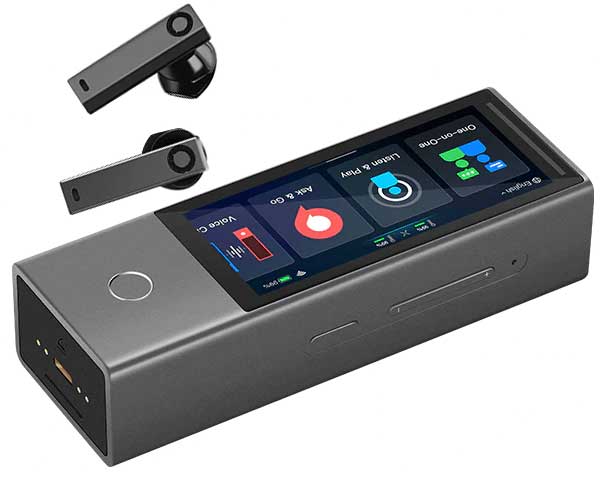
Powered by a HybridComm 3.0 and powerful AI translation tech, the X1 AI Interpreter Hub is bringing down the barriers in communication. The unit has a slide out tray with two earbuds, one for each person. Naturally speak for the earbuds to pick up, translate, and send to the other user. The units can be paired for up to 20 people in five languages and even supports remote calling. If you’re asking a quick question in the office and don’t want to go through the whole process of putting an earbud in the main unit can also translate by itself, and display translations written on it’s screen in what they call Ask & Go mode. A charging hub will auto pair the connected units together, perfect for large conferences. It’s 60% faster than other translators as it works toward simultaneous translation, working word by word instead of waiting for complete sentences to be finished before working on the translation.
Timekettle.co RRP US$699.99
Holoconnect Holobox
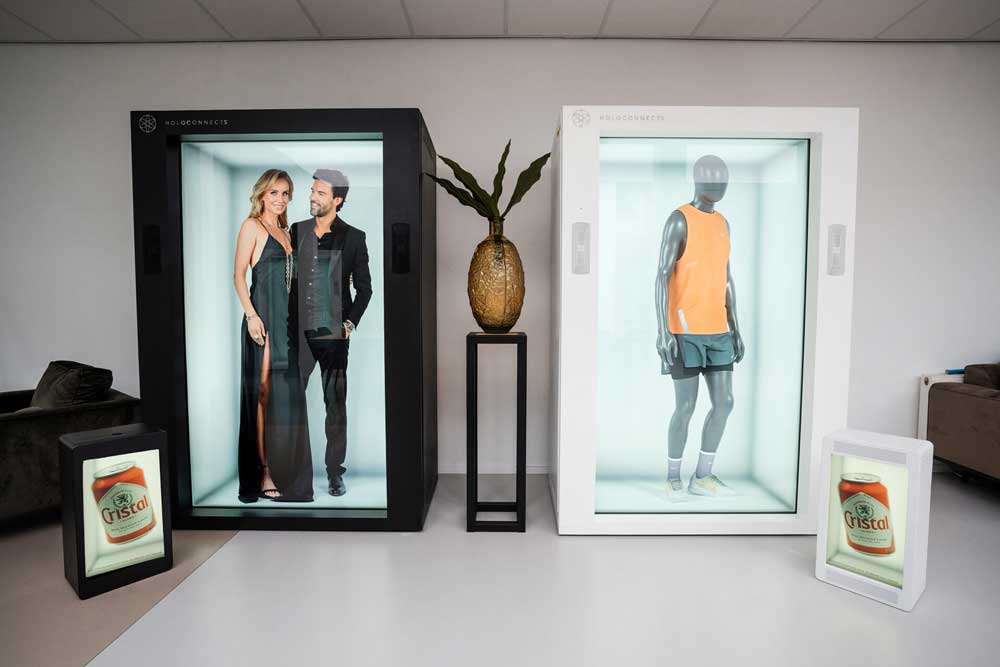
During the pandemic we started to look at new ways we could interact with each other without physically being present. This lead to a big push in VR interaction but it just isn’t the same. Holobox is coming from a different direction for telepresentation with a white cube with a projected video inside it that gives off the impression of someone affably trapped inside. The large closet style box is equipped with an 86” transparent LCD screen that when viewed from the right angle tricks your brain into thinking the 4k image is 3D.
It seems most useful for prerecorded content for store presentations, but it could also be useful in boardroom business situations. Trials of the device required a white studio style room/background to record against, which isn’t exactly simple to set up. One use-case involved five units side by side, to show off the latest BMW seemingly floating inside. It’s a great trick, but I can see it getting overtaken in the future by simpler solutions.
Ballie
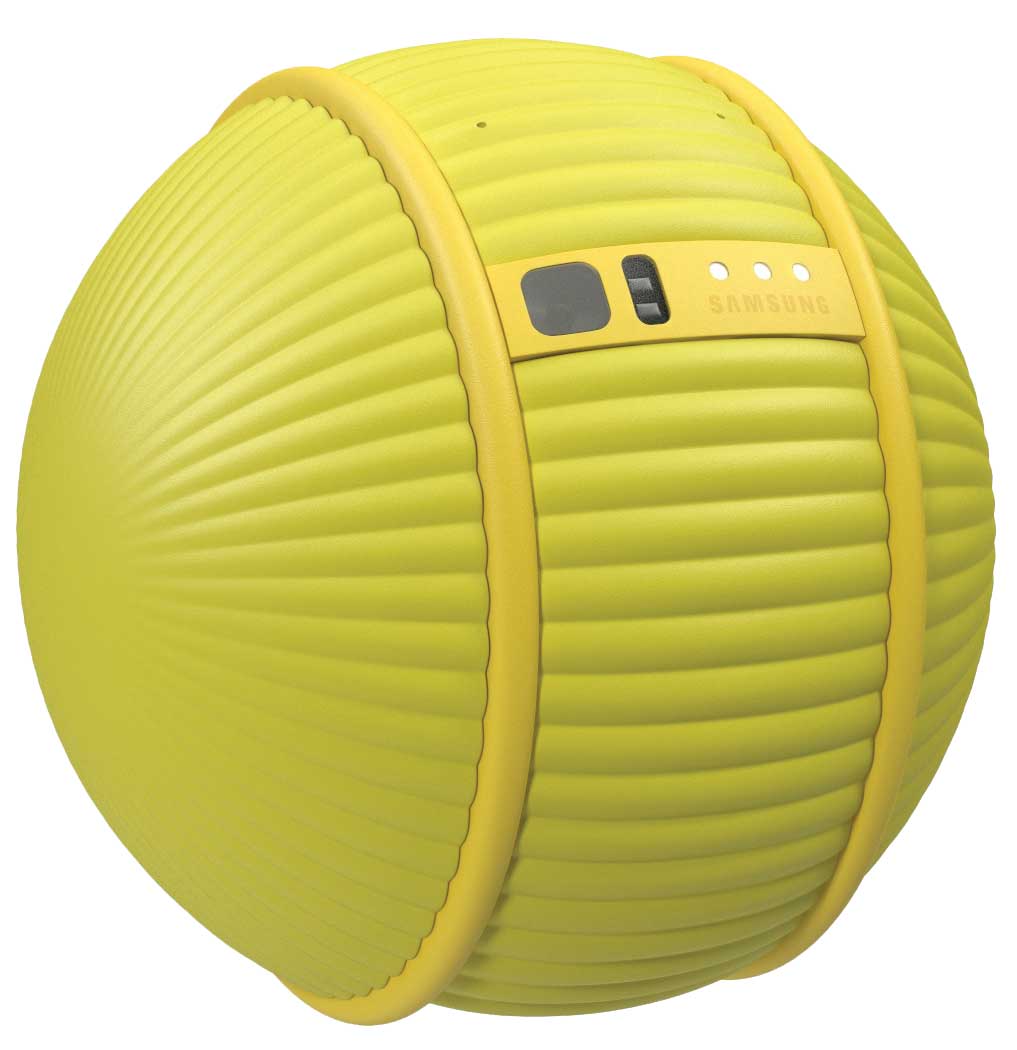
Ballie is a tiny trundling orb desperately trying to justify it’s existence to you. Made by Samsung Ballie is a personal home assistant that can follow you around and help you with any household task that doesn’t require arms. It can interface with other connected devices, answer phone calls, play music and comes with a built in projector which can chase and project for you anywhere. That could be anything from a starfield over your bed at night, a youtube video on the floor to distract your dog from ripping up the sofa, or a quick cooking video beamed onto the fridge in the kitchen so you don’t burn the water.
It has all the spy surveillance equipment we’ve saturated our homes with, including an active camera you can tap into via your phone. It can recognise faces, routines and comes when you call it. It can’t roll over or shake hands so dogs still haven’t been made redundant yet.
Ballie is powered by Tizen OS and is guarded from external hacking attempts via Samsung Knox which protects user data by blocking unauthorised malicious apps etc. The unit at CES is still just a prototype but we should see more later this year.
CES By The Numbers
2.5+ million
net square feet of exhibits, 15 percent bigger than CES 2023
4300+ exhibitors
including 1400+ startups within Eureka Park. Startups are alive and kicking, despite reports to the contrary.
135,000+
attendees, a record 40+ percent from 150 countries, regions and territories. Foot traffic has bounced back since a few teppid showings.
60%
of Fortune 500 companies. Together these companies could buy a couple countries.
5000+
global media and content creators. That’s a lot of influencers hyping up over-glorified vacuum cleaners.
The Rabbit R1
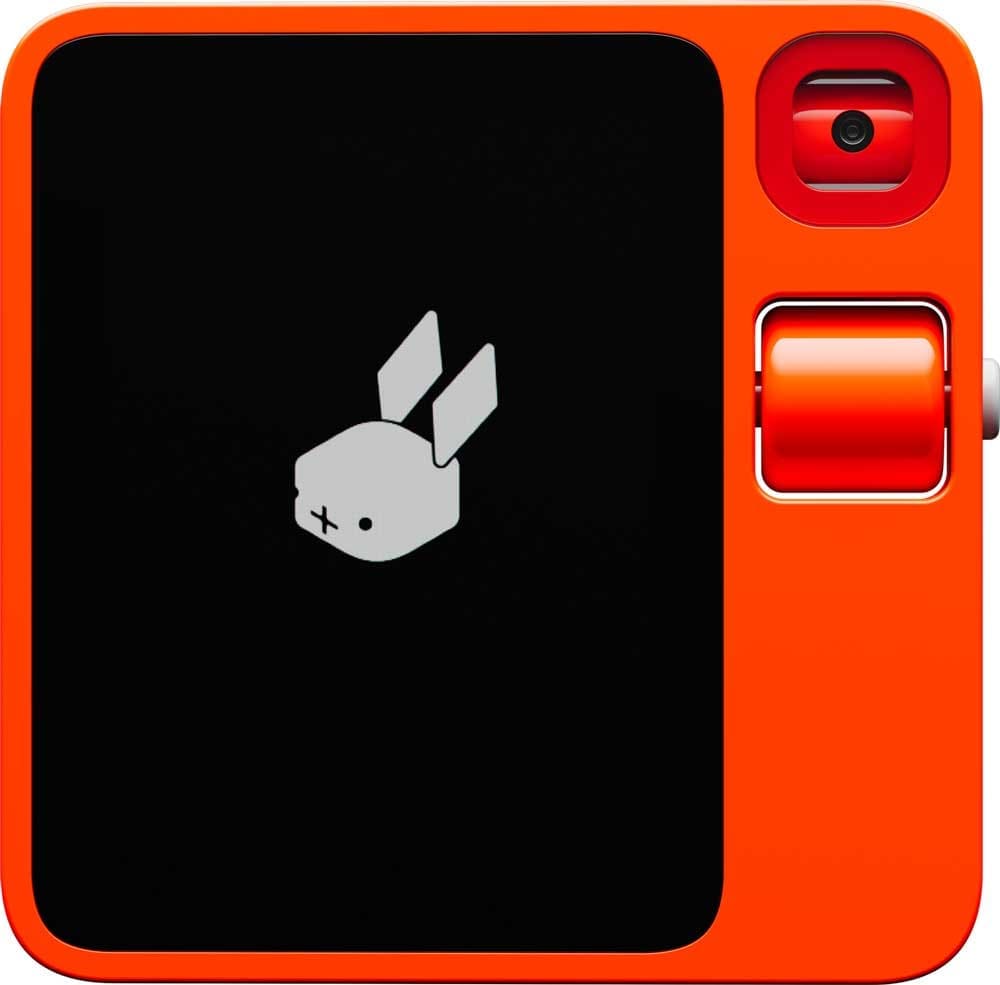
It’s really hard using all your handy apps, wouldn’t it be nice if instead you had an AI-Powered app that controlled your apps for you? So wouldn’t it be nice?? I’m honestly asking you, because I don’t know.
The Rabbit R1 is about half the size of a phone with a 2.88-inch touchscreen, scroll wheel/button, a 2.3GHz MediaTek processor, 4GB of memory, and 128GB of storage. It also includes a sim card slot, and takes USB-C. It’s essentially an AI device that can connect via bluetooth and has been trained specifically to interact with apps via a “Large Action Model” (a play on Chat-GPT’s Large Language Model). This is distinct from making a custom API for each app to interact with. It has learned from actual users to do what it does, and has a training mode that allows it to learn from you as well, being able to repeat and label tasks for repetition. Think of it as a universal remote for granular control. The screen is primarily for confirming inputs, while a mic and push to talk button is used to enter quick commands through the natural language interface. I’m not sure I see this taking off or even really working, but it’s an interesting piece of tech either way worth keeping an eye on.
Edit:
It appears that my leary sniff test was correct, reviews are in and it hardly works, as well as being part of uh, well, a bigger problem.
MSI Claw

There are a LOT of contenders coming for the Steam Deck’s crown, without even considering all the Aliexpress retro handheld peons. The best in show at CES 2024 was the MSI Claw which packs a lot of punch while staying comfortable over long play sessions. It has a crisp 7” FHD 120Hz 1080p touchscreen and is the first handheld to boast a Meteor Lake Intel Core Ultra CPU. It was this CPU that only recently dropped that held them back from releasing sooner. “The reason why we waited until now to launch the product is because we want to have a two-hour battery life, and we need to find the correct battery alongside the CPU,” Clifford Chun, System Product Managing Director told IGN.
Both its sticks and triggers are Hall Effect, which are all the rage now that everyone is sick and tired of getting stick drift on their controllers a year after buying them.
It has it’s own UI called the MSI Center M, which gives instant access to Steam, Epic, Game Pass, the works, so easily a more open platform than the Steam Deck is out of the box. Other specs include a Intel Redwood Cove, Crestmont & Xe-LPG, up to 1tb of storage, and Arc Graphics 8 Xe-C @ 2.25 GHz.
The MSI Claw is expected to release in the second half of 2024.
The Spacetop

Spacetop is the surprisingly logical next step in AR devices. Essentially it’s a laptop, except instead of a screen you get a pair of wired glasses that project a monitor space in front of you. The benefit of this is that your screen size can be as big as you want it to be. As long as you’re ok sitting in a cafe glancing all over the place like you’ve just seen a ghost. Having an AR setup means you can also have multiple windows placed anywhere you like around your sitting area, lowering the need for tabs, Slack can just be open at all times hover over your head, literally, if you want to give yourself neck strain. Another added benefit is that all your windows are entirely private, no shoulder peeking possible. Specs suggest a 100” canvas, 5 hours of battery life, 5g, and Qualcomm Snapdragon XR2. It also has 8GB LPDDR5, 128GB UFS3.1. The glasses themselves are 2 X OLED display panels (1920×1080 pixels per eye).
Samsung VR Monitor
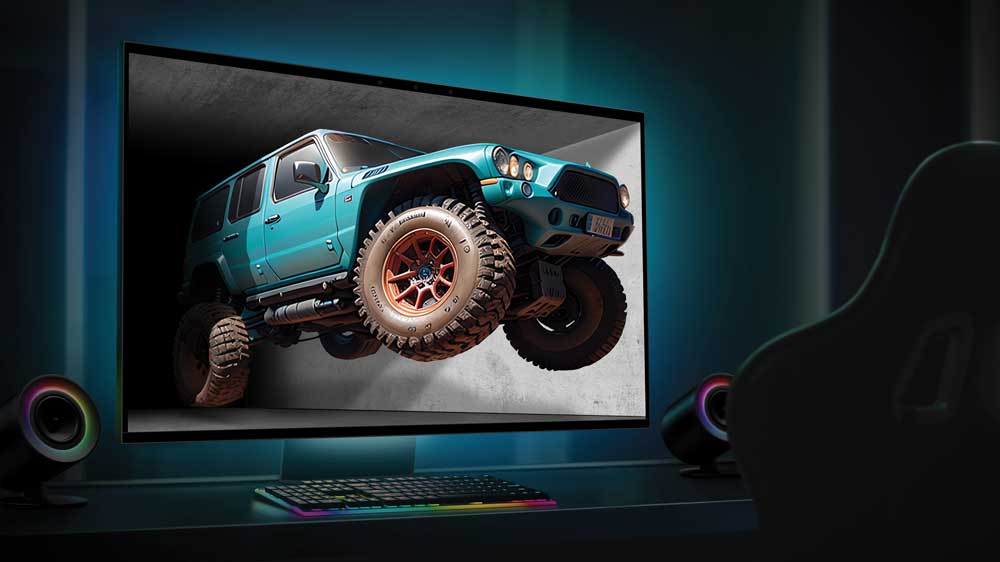
Nintendo released the 3DS in 2011, and I loved it. It’s tech allowed players to see 3D visuals without the aid of 3D glasses or a headset. It would track your eyes to create the effect, and anyone else looking at the screen would get a headache inducing double image. As far as I was concerned, playing it on the bus it was anti-snoop technology. It was a very cool idea but nobody else seemed to pick it up. Now well over a decade later Samsung is having a crack with it’s 2D/3D Gaming Monitor (name subject to change). It’s a Neo QLED display with a 4k resolution that is a perfectly good monitor. It’s also installed with two cameras for face tracking and toggleable 3D mode for instant depth. In this age it’s being spun as a complimentary VR product for people who don’t want to strap on a headset. It’s even compatible with Steam VR. We should note you won’t be sharing this monitor with anyone, getting a second face in there will freak out the tracking. For this tech Samsung won Best of Innovation in Gaming and eSports at CES. We don’t know too much more about it, but expect to get further updates later in 2024, hopefully alongside more images like the one above, generated by AI, look at that tire tread peeling off into the suspension.
Motion Sleep AI Pillow

The Motion Pillow is the perfect canary down the coal mine in terms of AI being used as a marketing vehicle. We covered the Motion Pillow last year and it has been in attendance at CES since 2020, receiving an innovation award almost every year (nothing for 2021) for essentially the same thing. In short it’s a pillow that has a row of airbags. It listens to your sleep patterns and if it picks up extended snoring it gently inflates bags strategically to gently turn your head into another position to clear your airway. It’s a cool idea and an app allows you to establish how gentle the inflations are, cranking up the settings for some real head rolling results. Using the wayback machine we’ve seen a massive uptick in the keyword use of AI on their homepage. Let’s see if it translates to a better result on their bottom line.
WowMouse
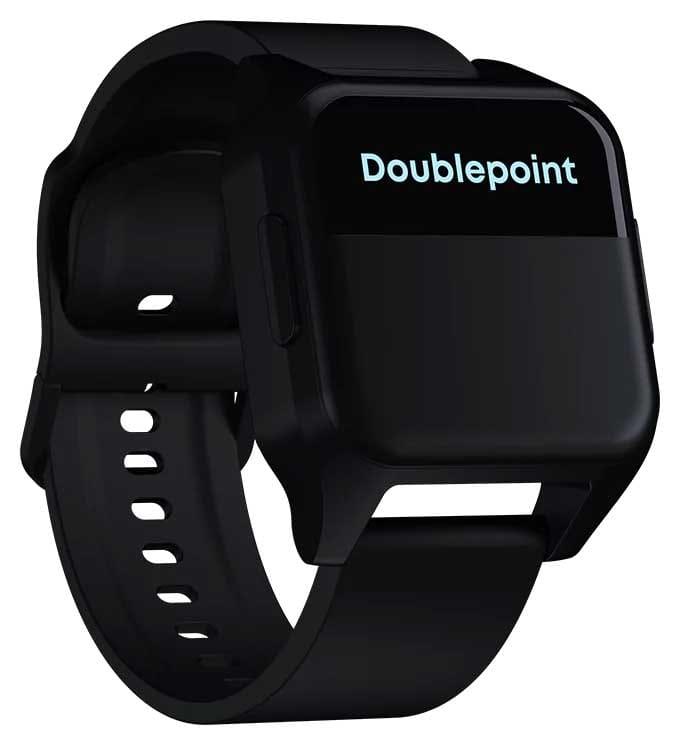
If you have a Wear OS device such as an Android smartwatch, it’s about to getting a whole new level of functionality thanks to WowMouse, an app that turns your entire device into a Bluetooth mouse that takes advantage of your wrist and finger movements. A demo video shows someone able to point at a screen and use pinch gestures to click and scroll on stuff, very much like using the Meta Quests gesture controls in VR. It’s a very cool way to add functionality to existing devices. This is the tip of the iceberg and they want to go even further integrating it with smart devices around the home so you can gesture control those as well. We’ll have to wait and see on that, but for now I’m happy to just have a mouse made out of oxygen. Would pair nicely with my new Raspberry Pi.
Available on the Google App Store now
The FIIO CP13
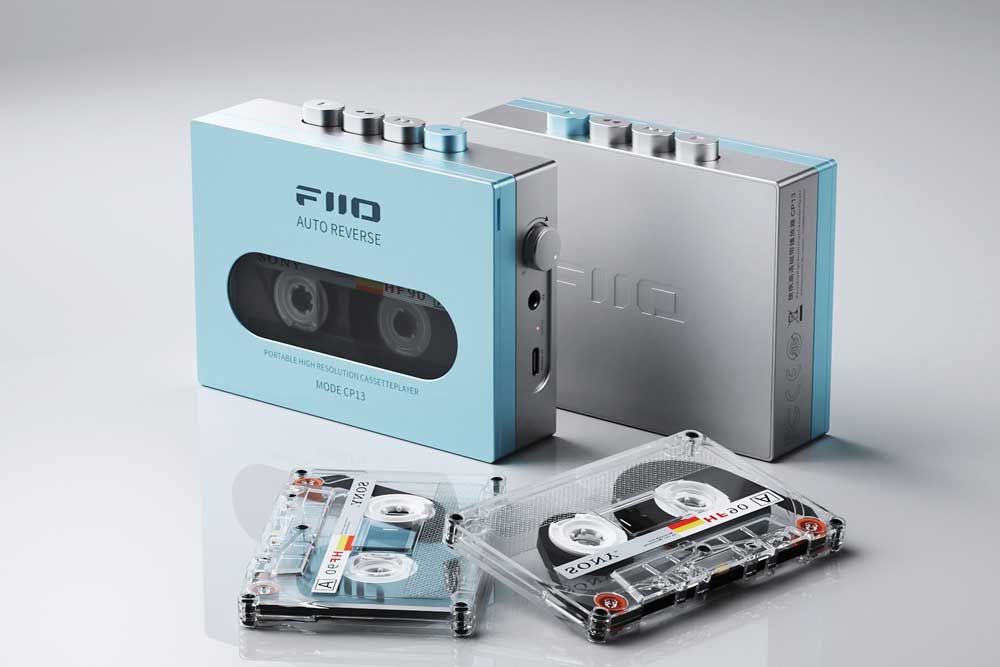
I never thought walkmans would be back but here we are, I guess the kids have taste in pencils and winding tape back into its cartridge. Sales on cassette players are up, some of my favourite artists are doing dual releases of vinyl and tape, so I guess it’s time to figure out how to play the damn things again. FIIO showed off it’s CP13 Portable Stereo Cassette Player at CES, and it was a real crowd pleaser. It helps it’s relatively inexpensive, only NZ$170. It has a nice square industrial design and a leatherette case to slip over it if you want to save it from scratches. Gone are the AA batteries and in are the USB-C charging cables. Big playback buttons run along one edge while a 3.5mm aux port is located next to volume and charging slot. Battery life lasts up to 15 hours and it comes in a range of colours. It’s simple, and captures the oldschool cool we’re all looking for right now.
CLICKS
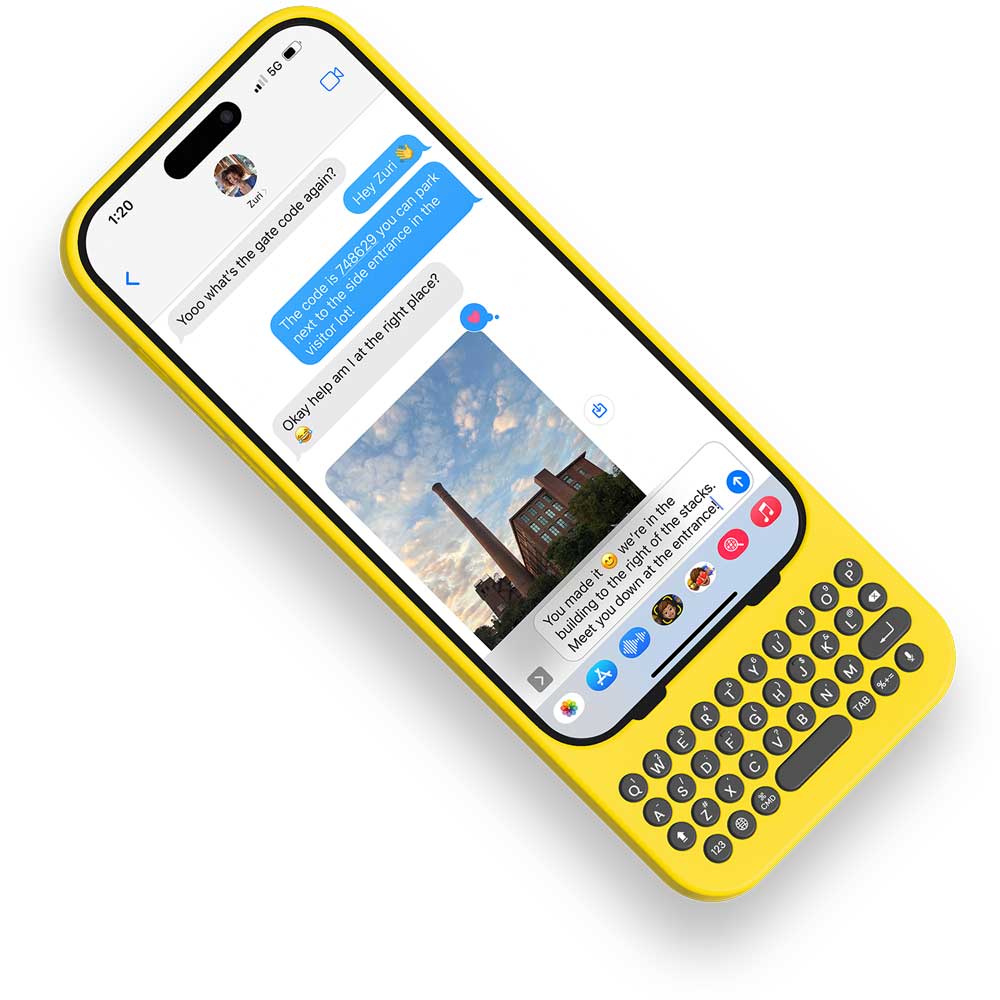
The last phone I had before making the jump to smartphones was a cute little QWERTY phone. It was fantastic to write on, even if the buttons were miniscule. To this day I yearn to go back to it. While we might not go back to the keyboard, it’s coming back to us. Clicks debuted their iPhone smartcase at CES and it’s perfect for people that are tired of pawing at the glass on their screen. It’s a phone case with a keyboard attached to the bottom. Sure it makes your phone ridiculously long but just think of everything you can do on it. You can type… and the list goes on! I jest, it can also be used for creating iOS shortcuts and can also take voice input at the touch of the button. But why do voice when touchtyping is back! Perhaps one of the bonus benefits of no longer needing the onscreen keyboard is how much realestate you suddenly free up. It’s like your screen has reclaimed a third of it’s realestate.
The founders edition is available for iPhone 14 Pro, iPhone 15 Pro & Pro Max. It comes in two colours, Yellow or grey. Weird colour combo but I guess they want you to make a statement. Are you fun or are you boring, it’s up to you.
clicks.tech RRP$139
Solar Generator Mars Bot
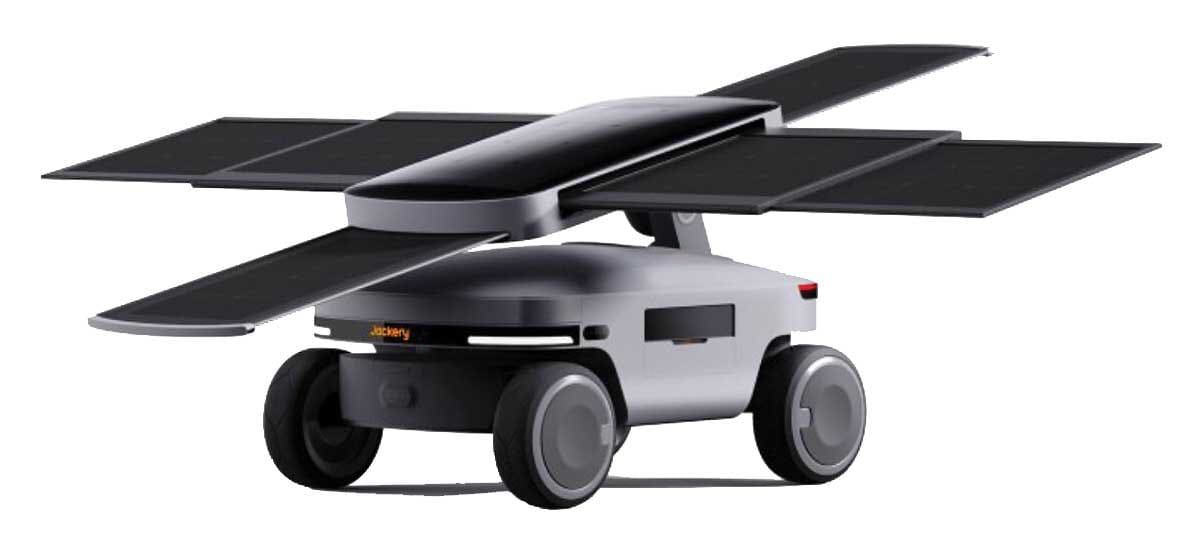
Go all out with an autonomous charging station that can chase the sun around your yard all day looking for the best places to charge. Designed by Jackery the Solar Generator Mars Bot was inspired by, yeah, the mars rover. It’s packed with cameras that gives it the ability to track light and navigate around your yard or camping situation. You can designate locations for it to go or you can haul it around yourself. It’s packed with foldable photovoltaic panels that pop out the top boasting a 600W output and apparently demonstrates a 25% max solar conversion efficiency. The entire robot is constructed from high-strength, impact-resistant engineering waterproof and dustproof aluminum alloy making it perfect for outdoor use, out on the pateo when you need a range of USB-A, USB-C, three-prong and 120V power output ports.
Razor Esther Haptics Chair
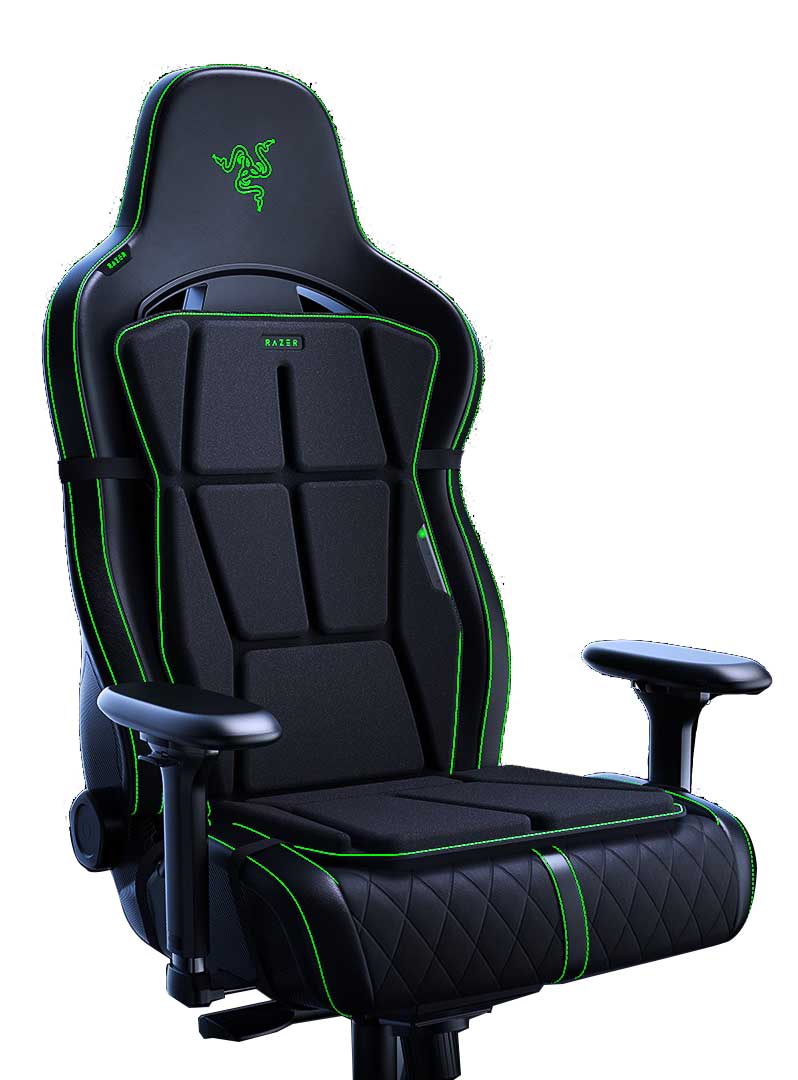
Surround sound is all well and good, but what if you could feel footsteps reverberating up behind you with your very spine. Razor showed off the first ever HD positional haptics gaming chair. The chair is built with 16 haptic actuators which are optimally positioned for maximum contact with your body. The haptics pad is actually disattachable from the chair, so really you can fasten the Haptics pad to whatever setup you’re using now. A series of straps means you can fasten it to whatever you’re sitting on no problem, giving you a new level of immersion.

